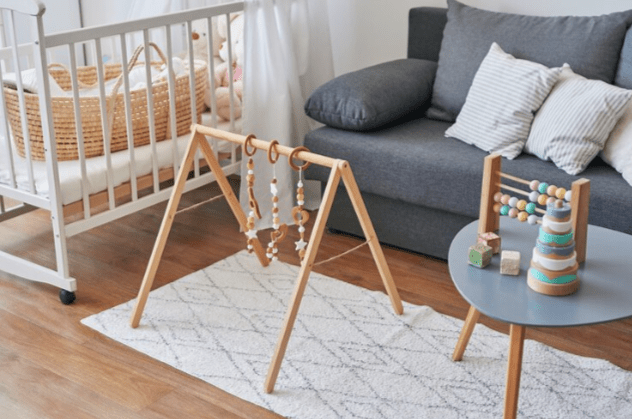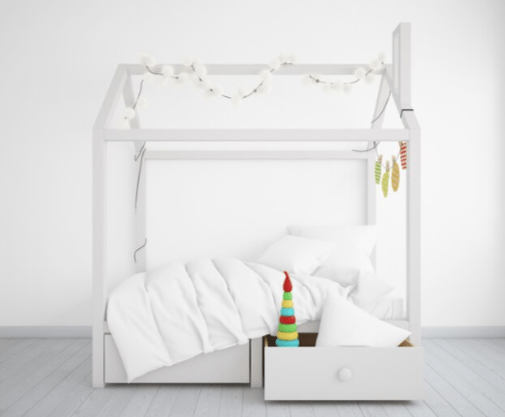Overview
Although it’s sometimes overlooked, furniture anchoring is an essential safety measure for homes. Even though it may appear innocuous, loose furniture can pose a serious risk, especially in areas where kids and dogs are present. To prevent toppling, it involves anchoring top-heavy objects, such as dressers and bookcases, to walls or floors. This precaution is essential for averting mishaps and guaranteeing a safer living space. This article provides a thorough approach to making houses safer for everyone by exploring the importance of furniture anchoring, outlining various securing techniques, and discussing important issues.
The Requirement of Furniture Anchoring

Furniture tip-overs cause hundreds of injuries and fatalities every year, bringing attention to a widespread yet avoidable problem. Children are particularly vulnerable because of their natural curiosity and energy. The severity of the issue is demonstrated by data and actual occurrences that consumer safety organizations have disclosed. These numbers highlight the critical need for awareness and preventive measures because they represent actual families affected by these catastrophes and are not just figures. In order to inspire change and protect those who are most in need, it is essential to comprehend the scope and consequences of furniture tip-overs.
Recognizing the Hazards: examining the various ways that furniture might become dangerous, with an emphasis on potential dangers such as earthquakes, inquisitive kids climbing, or just the weight of large items placed on top.
Recognizing Hazardous Furniture
Furniture Types Some furniture styles are more likely to topple over, which presents serious hazards. TV stands, dressers, and bookshelves are a few of the main offenders. Others that present a risk are freestanding mirrors and towering cabinets. A safer living environment depends on locating and locking these things.
Evaluate the Risks in Your House: Make a thorough walk-through of the house to locate any furniture that poses a risk. Look for top-heavy or unstable furniture in each room, such as TV units, dressers, and bookcases. Focus especially on high-traffic areas and spaces designated for youngsters. Take note of any furniture that houses large objects, has a small foundation, or wobbles.
Techniques for Furniture Anchoring: A range of furniture anchoring kits, comprising wall anchors, straps, and brackets, are accessible. Brackets offer firm support, while straps allow for flexible attachment. Wall anchors hold objects in place against various wall types. The weight of the furniture, the type of wall, and the amount of expected activity around the piece all play a role in selecting the best one.
Do It Yourself Solutions: For do-it-yourselfers, simple tools and materials can be used to secure furniture effectively. This tutorial will walk you through the process of using wall anchors, brackets, and screws step-by-step. It will stress the right positioning and fastening methods to make sure your furniture is securely fastened.
Expert Installation: It is advisable to obtain expert assistance when furniture anchoring appears complicated or there is a significant risk. This section will cover situations that call for professional assistance, such handling large objects or questionable wall constructions. In addition, it will provide an overview of the service, guaranteeing a home that is firmly fixed.
Step-by-Step Installation Process Guide: This guide will walk you through the entire anchoring process, starting with choosing the best wall location for both stability and appearance. It will go over how to drill holes into different kinds of walls safely and secure the furniture with the right hardware to make sure your home is set up securely and for a long time.
Common Errors to Prevent: This section will highlight common installation errors, like placing anchors incorrectly, utilizing insufficient hardware, or forgetting where wall studs are located. It will offer advice on how to steer clear of these difficulties, guarantee a safe and secure furniture arrangement, and encourage the ideal techniques for a fruitful anchoring procedure.
Taking Various Environments into Account
Homeowners against renters: This section tackles the special difficulties faced by renters when attempting to anchor furniture without permanently altering the wall. It offers workable substitutes that ensure stability without causing damage to walls, like tension rods, free-standing supports, and adhesive hooks. These ensure both safety and adherence to rental agreements.
Various Wall Materials This section will offer specific guidance on how to anchor furniture in various wall types. It will cover the use of stud finders and suitable anchors for drywall. It will emphasize the necessity of cautious drilling for plaster in order to prevent cracks. It will concentrate on employing masonry anchors for a secure hold on brick walls.
Pet safety and childproofing
Beyond Anchoring: Additional safety precautions for kids and dogs are covered in this section beyond anchoring. It advises adding drawer stops to stop drawers from fully pulling out and corner guards to cushion sharp edges. In addition to anchoring, these safety measures make the space safer by reducing the possibility of accidents caused by furniture interactions.
Teaching Children: It’s important to teach children about furniture safety in order to prevent accidents. This includes warning them about the risks of toppling furniture and instructing them not to pull on big objects or climb on shelves. Regular conversations and examples help to solidify these teachings and foster a safety-aware attitude among children.
Frequent Inspections and Maintenance
Typical Inspections: stressing the significance of routinely inspecting anchored furniture to guarantee ongoing safety.
Wear & Tear Indications: recognizing the warning indications that your anchoring technique has to be updated or changed.
Aspects of Law and Insurance
Comprehending the legal obligations of landlords about furniture anchoring in rental houses is important.
Implications for Insurance: The impact of furniture anchoring on house insurance claims and coverage.
Overcoming Typical Obstacles

Aesthetical considerations: addressing furniture owners’ reluctance to anchor pieces because of these concerns and providing ways to lessen the prominence of anchors.
Underestimating Risk and Procrastinating: Examining the psychology of delaying this important task and methods to get past it.
Testimonials and Case Studies
Success Stories: Telling true tales of incidents when anchoring saved lives and avoided accidents.
A lesson discovered: Testimonies from people who have been tipped over by furniture and their recommendations for others.
Future Trends: Innovations in Furniture Design: Examining how safety measures are being incorporated into newly designed furniture.
Law and Advocacy: This section provides updates on laws and advocacy initiatives to standardize furniture anchoring.
Conclusion
The simple yet essential act of furniture anchoring greatly increases home security. Furniture that is top-heavy or unstable should be secured to drastically lower the chance of accidents and injuries, especially for kids and dogs. This article reminds readers of the potentially life-saving benefits of properly anchored furniture and exhorts them to act right now. Furthermore, raising awareness of the significance of this safety measure might result in an overall improvement in home security. By pooling our expertise and acting proactively, we can make everyone’s living conditions safer.
We hope you found this information helpful in your journey to create a safer environment for your family. At GuardWell Safety, we understand that every home is unique, and so are your child-proofing needs. That’s why we offer a Free Child-Proofing Consultation tailored to your specific requirements. Let our experts help you identify potential hazards and provide personalized solutions to make your home a secure haven for your little ones. Book your free consultation today and take the first step towards peace of mind.






